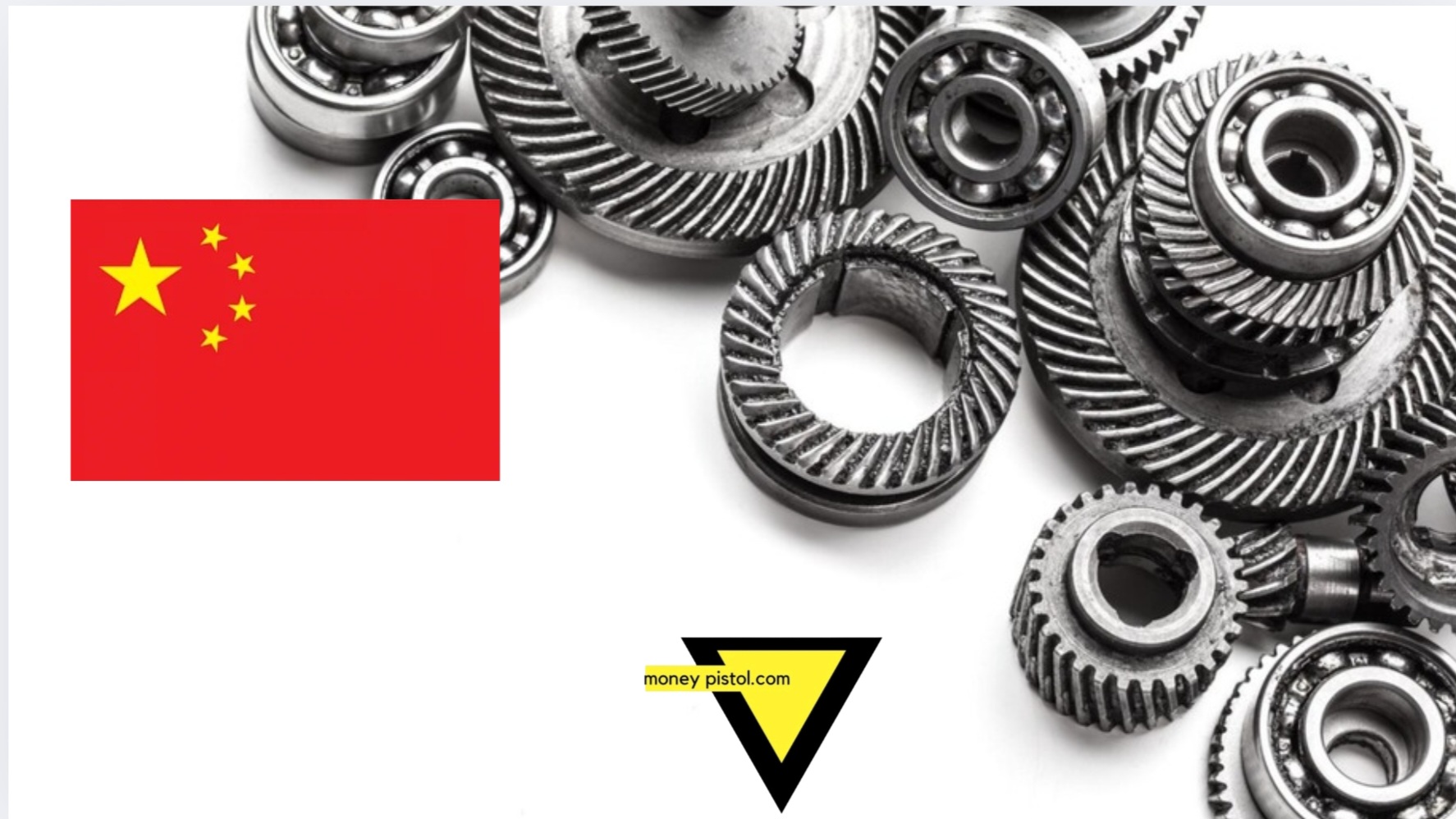Restricted access to rare earth magnets, an essential component of electric vehicles (EVs) and high-efficiency automotive systems, is a major barrier for India’s automotive industry in a time when global supply chains are becoming more susceptible to geopolitical changes. The supply of these magnets to India has been halted by China, which leads the world in rare earth element production and exports, which has repercussions for the entire automotive supply chain.
Shipments are still on hold since China’s commerce ministry has not given its final permission, even though the Chinese embassy has approved import applications from nine Indian car component makers. Industry leaders are raising concerns about the possibility of production halts and cascading delays in India’s vehicle manufacturing ecosystem as this deadlock enters its third month. www.reuters.com
The Magnet That Drives the Machine
Modern cars, especially electric automobiles, require rare earth magnets, notably neodymium magnets. Electric motors, gearboxes, drivetrains, and even more compact systems like infotainment and power steering are powered by these magnets. Rare earth elements are indispensable in many cutting-edge automotive applications due to their high magnetic strength and energy efficiency.
Even though their import value and volume might seem modest—India imported 870 tonnes in FY25, valued at ₹306 crore—their significance is disproportionately significant. “Even if we are short of a single component containing a rare earth magnet, we cannot manufacture vehicles,” stated one industry executive. This reliance emphasizes how strategically important it is to provide continuous access to these resources.
China’s Grip on the Rare Earth Supply Chain
China is in charge of around 90% of the world’s supply of refined rare earth magnets and about 60% of all rare earth mining worldwide. It has tremendous control over businesses around the world thanks to this monopoly, particularly as demand for electric vehicles and sustainable energy technology rises.
China has demonstrated its power in this area before, as evidenced by the most recent interruption. Export limitations and licensing barriers have historically been employed as political and economic instruments. Despite endorsements at the diplomatic level, the clearances have been delayed this time, indicating a tightening of control that may have far-reaching effects.
The urgency is recognized by the Indian government. In order to settle the issue, diplomatic channels have been opened to arrange meetings with Chinese colleagues. Manufacturers, meanwhile, are still operating in a state of uncertainty as negotiations progress.
SIAM and Industry Voices Raise the Alarm
The government has received a warning from the top industry association, the Society of Indian Automobile Manufacturers (SIAM), that manufacturing may stop in a matter of weeks due to declining rare earth magnet stockpiles. To reduce risk, a number of automakers and parts suppliers have already started adjusting their sourcing strategies and production schedules. However, considering China’s dominance and the technical difficulties in locating appropriate substitutes, options are still restricted.
“For the past two months, imports of rare earth magnets have completely stopped,” a senior official at a major components company stated. “The supply chain will begin to collapse if this keeps up, first in parts and then in cars.”
Other industries that depend on rare earth magnets, like electronics, defense, and renewable energy, are also feeling the pinch. An executive at a significant electronics industry said, “Everyone is affected,” underscoring the wider ramifications of China’s export policy.
Why Rare Earth Supply Matters to India’s Auto Future
The automobile sector in India is at a pivotal juncture. The nation has big hopes to become a manufacturing hub for electric vehicles and green mobility solutions as global trends change towards electrification. Progress could be halted by any interruption in the supply of vital parts like rare earth magnets, especially in a market that is extremely competitive and price-sensitive.
Furthermore, for Indian companies looking to position themselves as trustworthy international suppliers, production delays result in missed delivery dates, missed export possibilities, and harm to their reputation. The economic cost is increased by the cascade effect on Tier-1, Tier-2, and Tier-3 suppliers.
Strategic Responses and Long-Term Supply Chain Resilience
Discussions on the necessity of rare earth independence and supply chain diversification have been rekindled by this predicament. Despite having certain rare earth element reserves, India lacks the capacity to produce magnets and refine them on a significant scale. These facilities need time, money, and technological know-how to set up, and none of these factors provide instant relief.
In order to do this, India is looking into joint ventures with nations like Japan, Australia, and the US, all of which have resources and a strategic interest in weakening China’s monopoly. Although scalability is still an issue, recycling rare earth elements from electronic waste is increasingly gaining popularity.
Through programs like the Production Linked Incentive (PLI) schemes and targeted support for innovative materials manufacture, the government is under pressure to expedite efforts to develop domestic capacities.
The Road Ahead: What India Must Do Next
As the auto industry waits for a diplomatic breakthrough, the episode serves as a wake-up call on the risks of overdependence on a single supplier—especially one with a history of using trade as leverage. For India, the path forward must involve both short-term mitigation and long-term strategy: securing alternative sources of critical materials, building domestic capability, and designing supply chains that are not only efficint but also resilient.
While the current crisis may eventually be resolved through dialogue, it leaves behind an important lesson. In the high-stakes game of global trade and technology, strategic materials like rare earths are no longer just commodities—they are instruments of power, shaping the future of industries and nations alike.
for more such information stay connected tomoneypistol.com



Ограниченный доступ к редкоземельным магнитам действительно ставит Индию в сложное положение, особенно учитывая растущий спрос на электромобили и высокоэффективные технологии. Зависимость от Китая, который контролирует большую часть мирового производства, делает ситуацию ещё более напряжённой. Интересно, есть ли у Индии планы по разработке собственных месторождений редкоземельных элементов или альтернативных технологий? Это могло бы снизить зависимость от внешних поставок. Однако, учитывая масштабы и сложность переработки редкоземельных элементов, вероятно, это потребует значительных инвестиций и времени. Как вы считаете, какие шаги правительство и частный сектор могли бы предпринять в краткосрочной перспективе, чтобы смягчить последствия дефицита? Может быть, стоит рассмотреть сотрудничество с другими странами или ускорить разработку синтетических альтернатив? Было бы интересно узнать ваше мнение по этому поводу.
Тема: Re: Дефицит редкоземельных магнитов и стратегическая позиция Индии
Уважаемый господин/госпожа,
Благодарю вас за ваши вдумчивые идеи о проблемах, связанных с ограниченным доступом к редкоземельным магнитам, особенно в контексте растущих в Индии секторов электромобилей и высокоэффективных технологий.
Вы абсолютно правы, указывая на стратегическую уязвимость, вытекающую из зависимости от Китая, который в настоящее время доминирует в мировом производстве и переработке редкоземельных металлов. Индия обладает запасами редкоземельных металлов, но, как вы упомянули, их превращение в надежную и конкурентоспособную цепочку поставок сопряжено со значительными технологическими, экологическими и финансовыми препятствиями.
В краткосрочной перспективе я считаю, что индийское правительство и частный сектор могут предпринять несколько упреждающих шагов:
1. Стратегические партнерства: для получения более надежных и разнообразных поставок может быть полезно укрепить отношения с такими странами, как Австралия, США и Япония, которые обладают как запасами, так и перерабатывающими мощностями.
2. Государственно-частное сотрудничество: Развитие можно ускорить, поощряя внутренние исследования и переработку с помощью грантов, партнерств и обмена информацией между государственными и частными организациями.
3. Инвестиции в НИОКР: Больше денег на исследования синтетических и других материалов может постепенно уменьшить зависимость от традиционных редкоземельных элементов, особенно для магнитов, используемых в электронике и электромобилях.
4. Инициативы по переработке: Пока создаются новые цепочки поставок, поощрение переработки редкоземельных элементов из электронных отходов и выброшенных гаджетов может обеспечить более быстрый и устойчивый источник.
5. Политическая поддержка: Предоставляя налоговые льготы и упрощая нормативную базу, можно привлечь больше частных инвестиций в этот критически важный сектор.
Недавние изменения в политике Индии, такие как схемы стимулирования производства (PLI), свидетельствуют о сильном намерении локализовать производство в ключевых технологиях. Скоординированными усилиями Индия может снизить свою зависимость, одновременно создавая долгосрочную стратегическую устойчивость.
С нетерпением ждем ваших мыслей по этому поводу.
С наилучшими пожеланиями,
Динеш Шах.
________________________________________